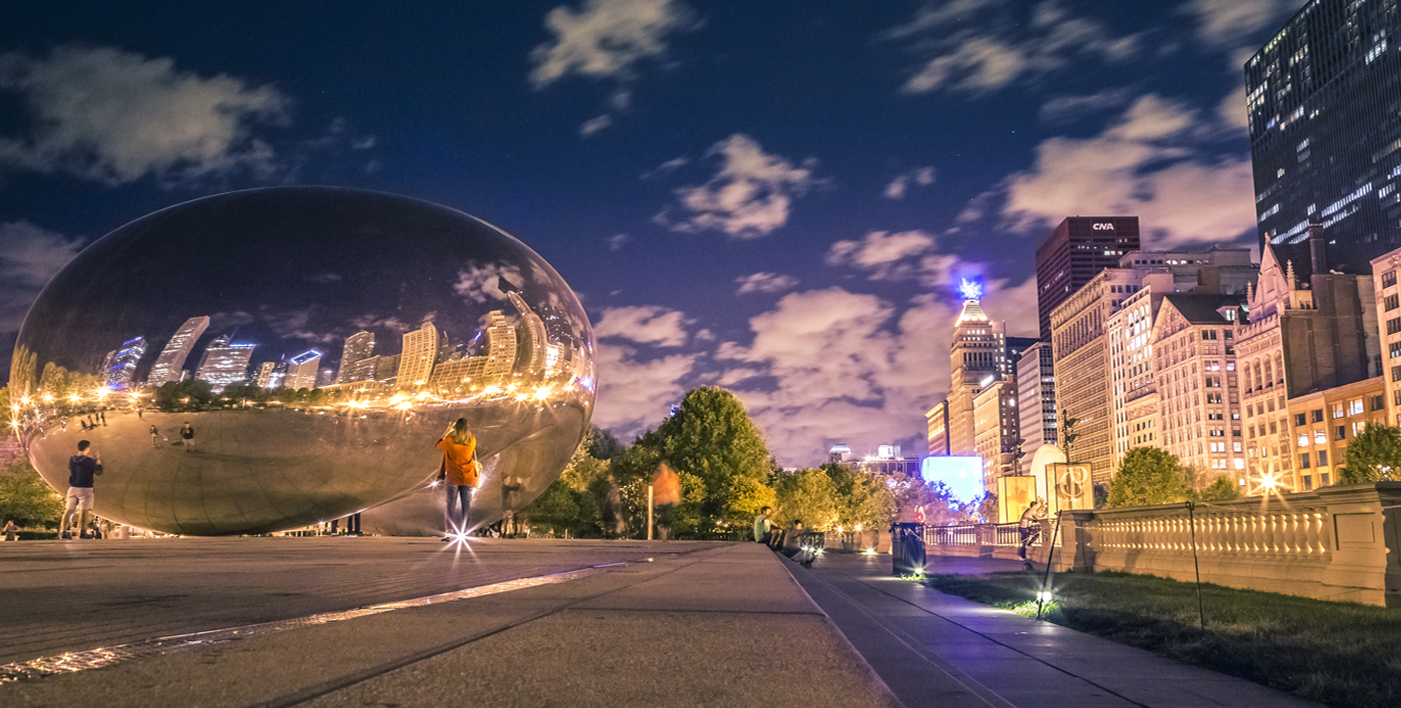Chicago is a city with history — a whole lot of history. So it’s hardly surprising that it’s also a city with ghosts — a whole lot of ghosts.
From victims of the Great Chicago Fire to a serial killer luring victims from the World’s Fair, here are 10 spine-chilling tales from Chicago’s haunted history.
Keep reading: Learn the chilling stories behind Chicago’s most historic — and haunted — hotels.
Death alley and ghostly tales in the Theatre District
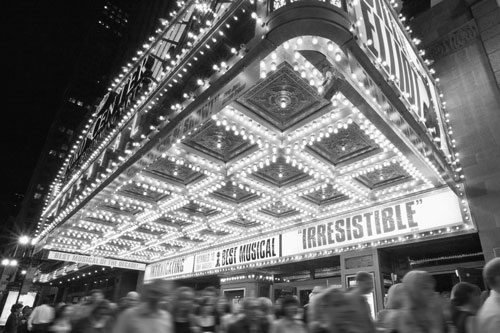
The Iroquois Theatre, the site of an infamous 1903 fire, occurred in the Chicago Theatre District near what is now the James M. Nederlander Theatre. The Theatre, newly built, claimed that the building was “fire-proof.” During its inaugural performance, a blaze broke out, and many of the fire doors were locked, trapping patrons inside. When the flames subsided, around 600 people were pronounced dead.
It took more than five hours to retrieve the bodies, and the alley behind the theatre, known now as Couch Place, functioned as a temporary morgue. Today, reports of faint cries, apparitions, and feelings of being touched or even pushed by invisible entities have been reported in that same spot — hence the nickname “Death Alley.” The disaster ushered in a series of fire safety reforms still visible today.
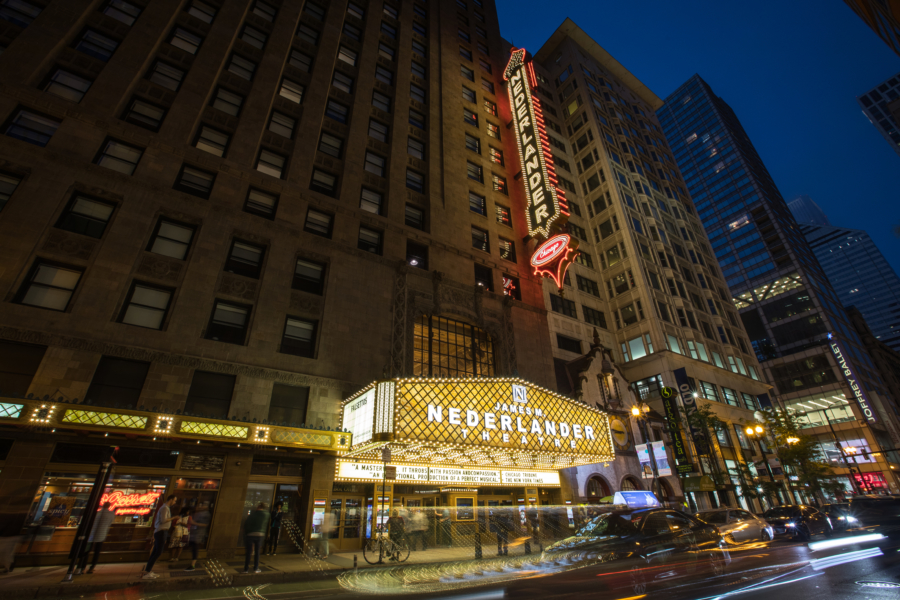
Ghostly tales don’t seem to keep avid theatre-goers away, however. The Nederlander Theatre’s stunning architecture and run of premieres and Broadway shows keep the crowds coming and the ghosts at bay.
H.H. Holmes’ Murder Castle
The former home of the country’s first serial killer, H.H. Holmes, is located in Chicago’s Englewood neighborhood. While the building has been replaced by the local post office, the site was originally the location of Holmes’ infamous Murder Castle, where he lured unsuspecting patrons of Chicago’s 1893 World’s Fair.
Built in 1893, Holmes hired multiple contractors for various portions of the project to ensure that no one person, aside from himself, knew the floor plan in its entirety. The bizarre blueprint included stairs and hallways that led to nowhere, oddly angled hallways and windowless rooms, designed to disorient and trap his victims.
It’s hard to know definitively just how many people Homes murdered. And although he confessed to 27, most of whom were women, some historians believe the number to be in the 200s. Today, maintenance workers report odd sightings and feelings of intense anxiety while in the new building’s basement, where most of the murders took place.
It’s been over 120 years since Homes terrorized the Englewood neighborhood, but his legend is very much alive. If you want to read more, Holmes’ life and experiences are the subject of the bestseller Devil in the White City.
Couch Mausoleum and Lincoln Park
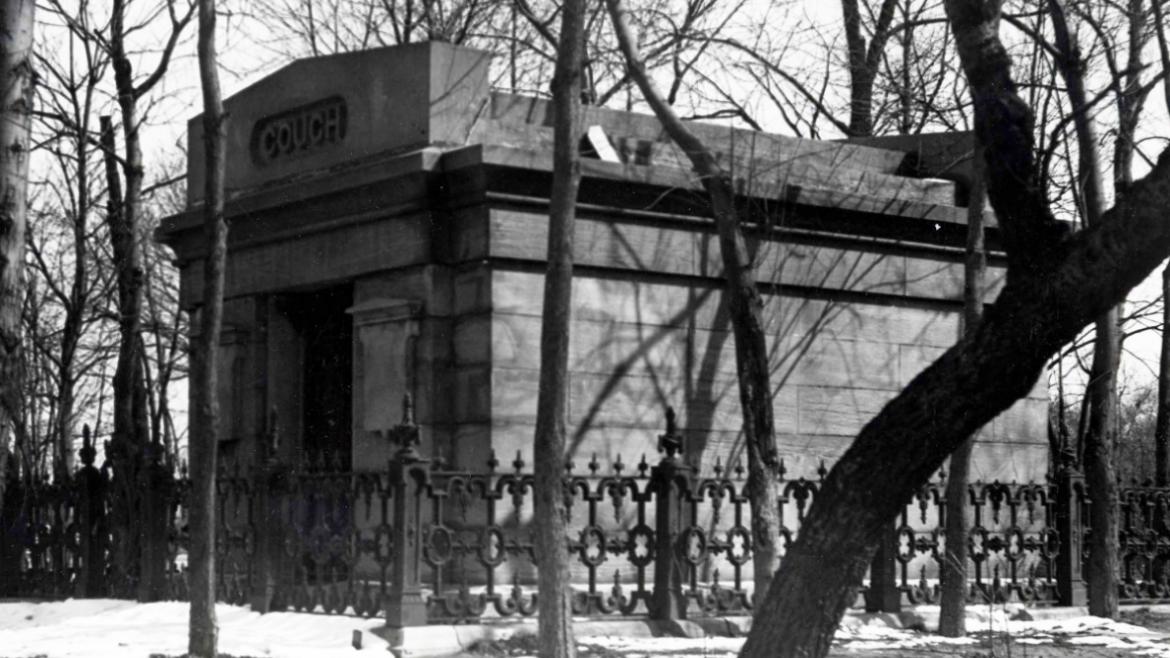
Photo courtesy Chicago Park District
The southern edge of picture-perfect Lincoln Park originally served as a massive city cemetery throughout the mid-1800s. During the Great Chicago Fire, all the wooden grave markers were destroyed — except the limestone Couch Memorial crypt, that still stands at the south end of Lincoln Park.
In 1998, workers digging on the site discovered the remains of more than 80 people, including one perfectly preserved body sealed in a 19th-century iron coffin. Experts estimate that more than 12,000 bodies may remain buried throughout the park to this day.
Chicago Water Tower
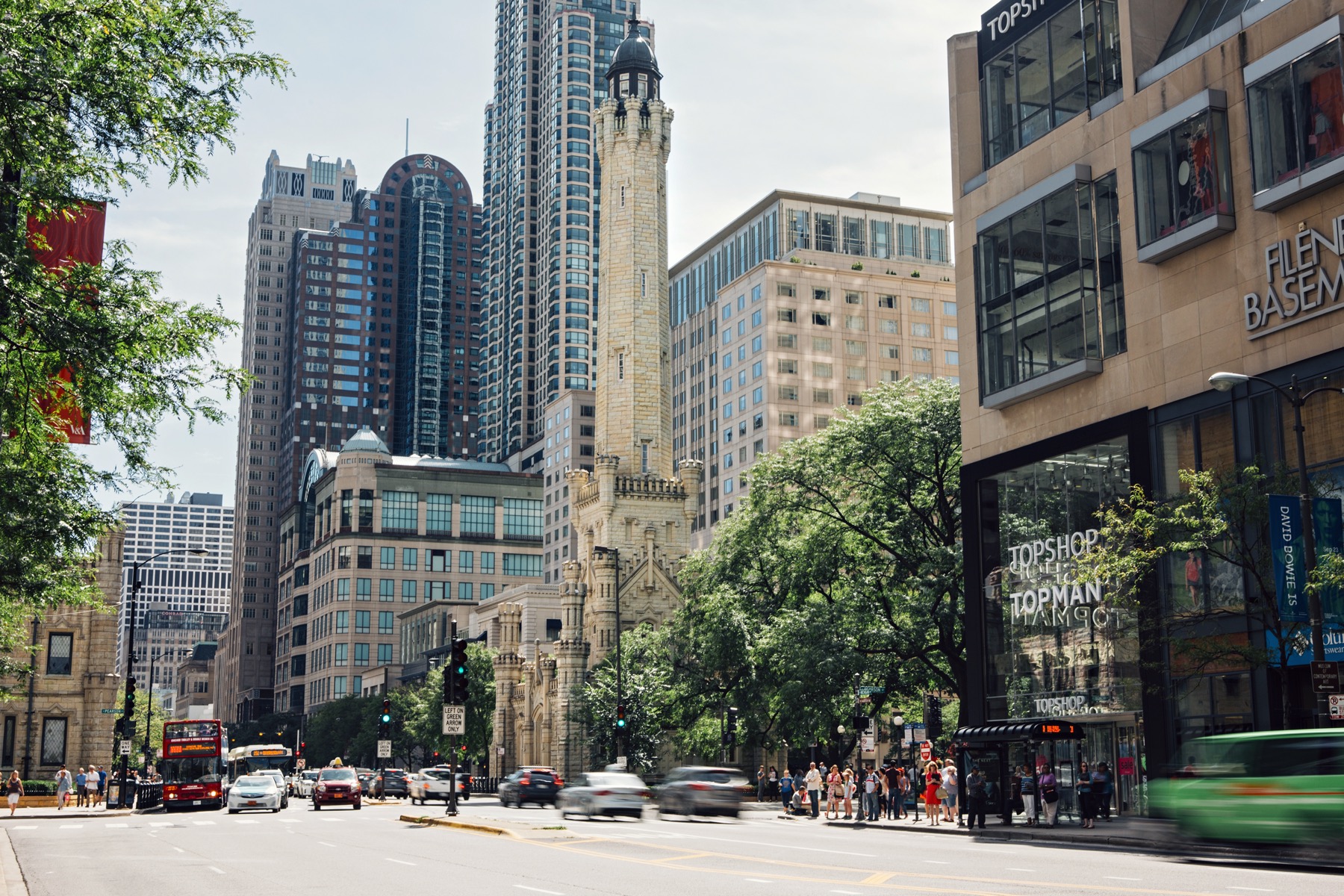
This downtown landmark has a tragic history. Located along The Magnificent Mile, the Historic Water Tower is a striking Gothic Revival building that was designed to be home to a large water pump intended to draw water from Lake Michigan.
This iconic limestone building was one of the few to survive the devastating Great Chicago Fire of 1871, but it wan’t devoid of tragedy. History holds that as the flames raged, one brave worker stayed behind to tirelessly man the pumps. As the fire inched ever closer, and with no salvation in sight, he retreated to the upper floors of the tower where he hung himself. Multiple reports have claimed that a shadowy figure can be seen in the tower’s top floor windows.
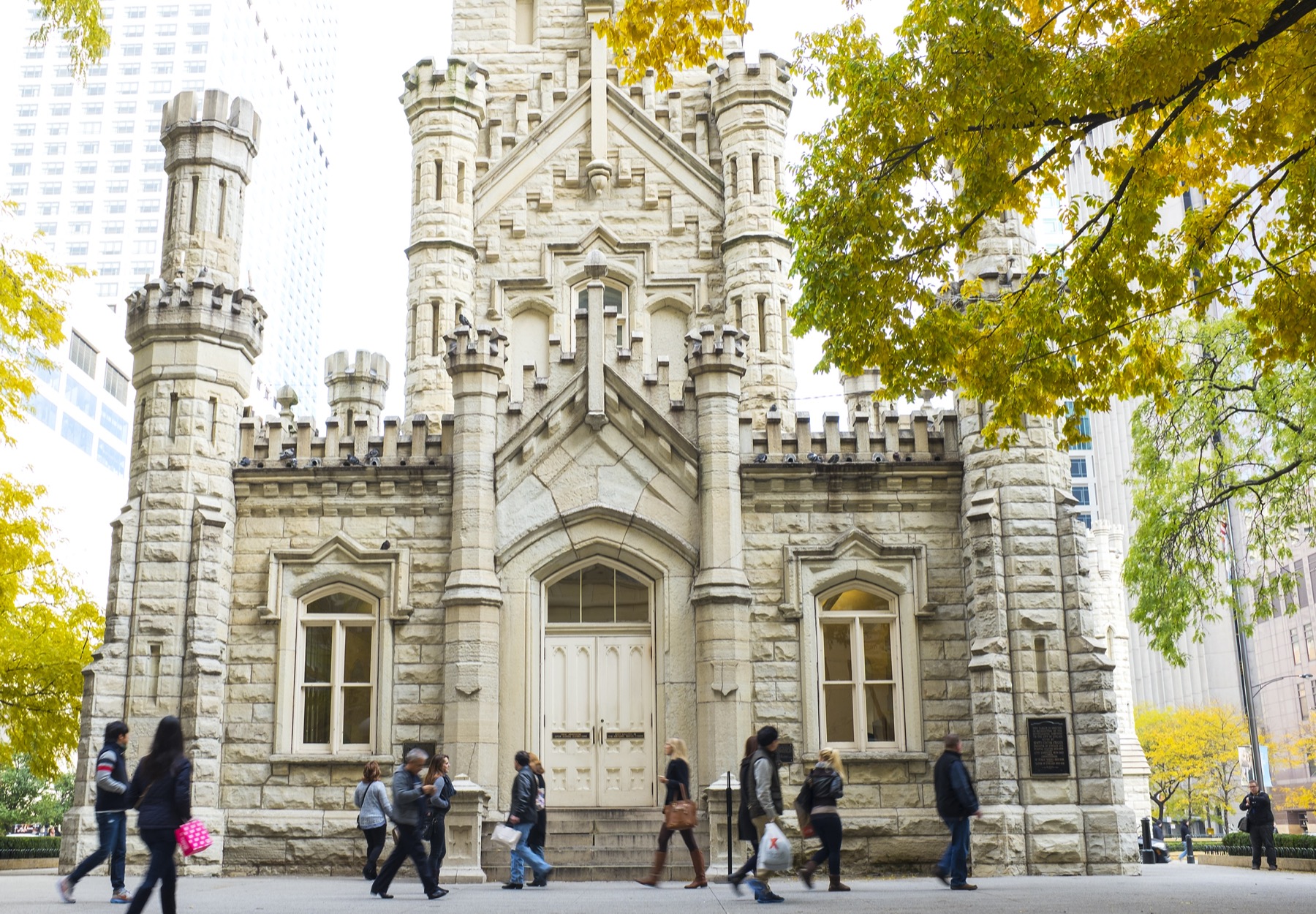
Today, the tower has been transformed into The City Gallery at Historic Water Tower, a frequent venue for cool photo exhibitions. Take a peek inside free of charge.
Congress Plaza Hotel
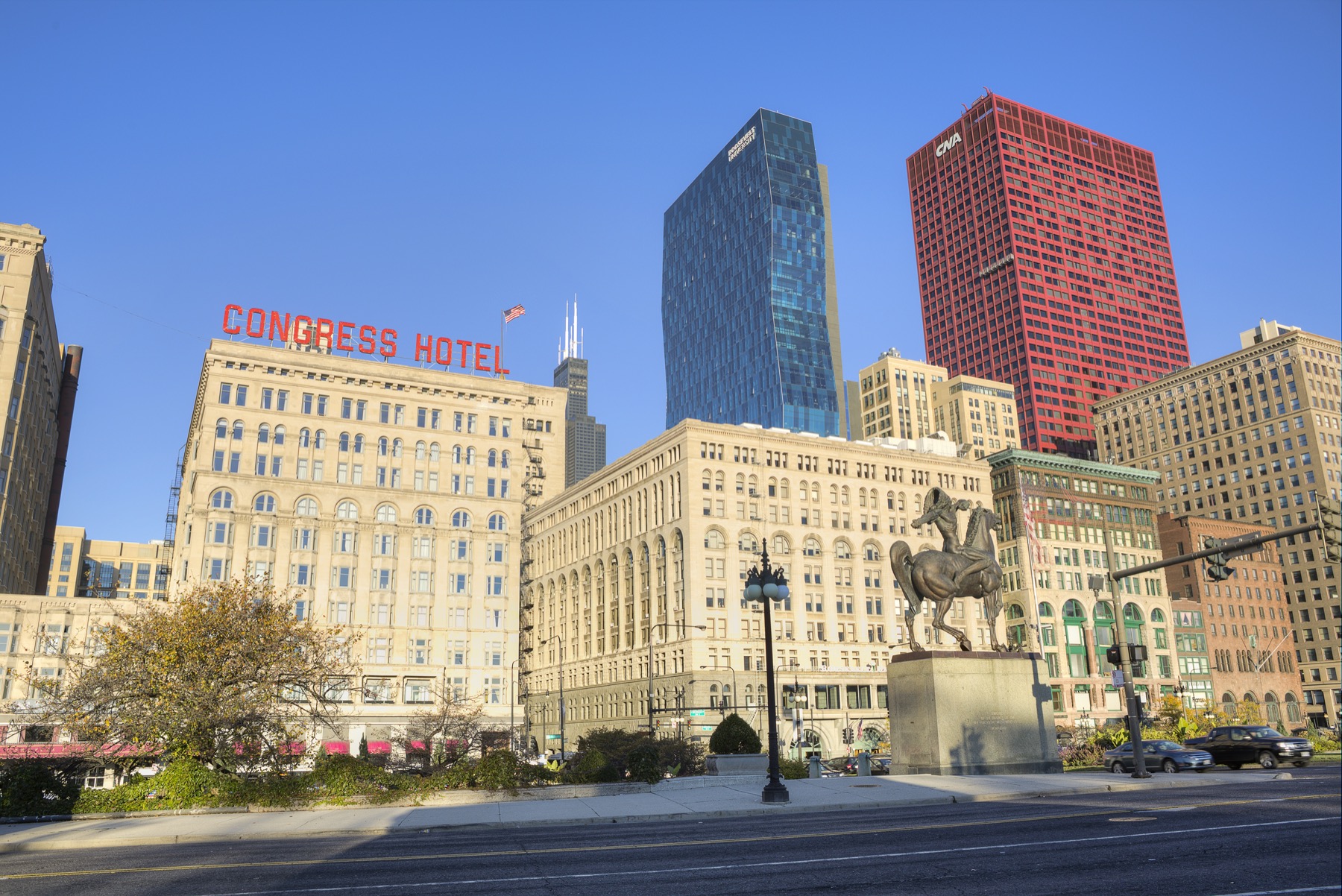
Named the most haunted place in Illinois by Travel & Leisure, the Congress Plaza Hotel’s history begins with the 1893 World’s Fair.
The luxurious hotel was built to help house the influx of visitors to the city during the fair, and quickly became the focus of rumors. For instance, some say that mobster Al Capone and his cohorts ran their headquarters and even committed gruesome crimes there, although these claims have come under some scrutiny.
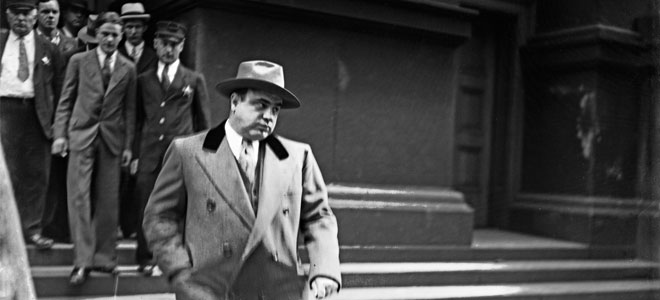
Mob rumors aside, if you find yourself spending the night in the South Tower, you might just run into “Peg Leg Johnny,” the spirit of a man who was brutally murdered in the alley behind the hotel. Who he was, and the circumstances of his death, remain a mystery.
The North Tower has its own urban legends. Hotel staff have reported seeing the apparition of a playful young boy on the 12th floor. He is believed to be the spirit of a child who, along with his sibling, was thrown from the North Tower by his mother. She, too, jumped to her death.
The most haunting, however, takes place in Room 441. Visitors have often reported seeing the silhouette of a woman as well as objects in the room move, or lights turning on and off at random. The room is even believed to be the inspiration Stephen King’s horror story, 1408, about a haunted hotel room.
Feeling brave? Make your reservation here.
Site of Eastland River Disaster, Chicago River
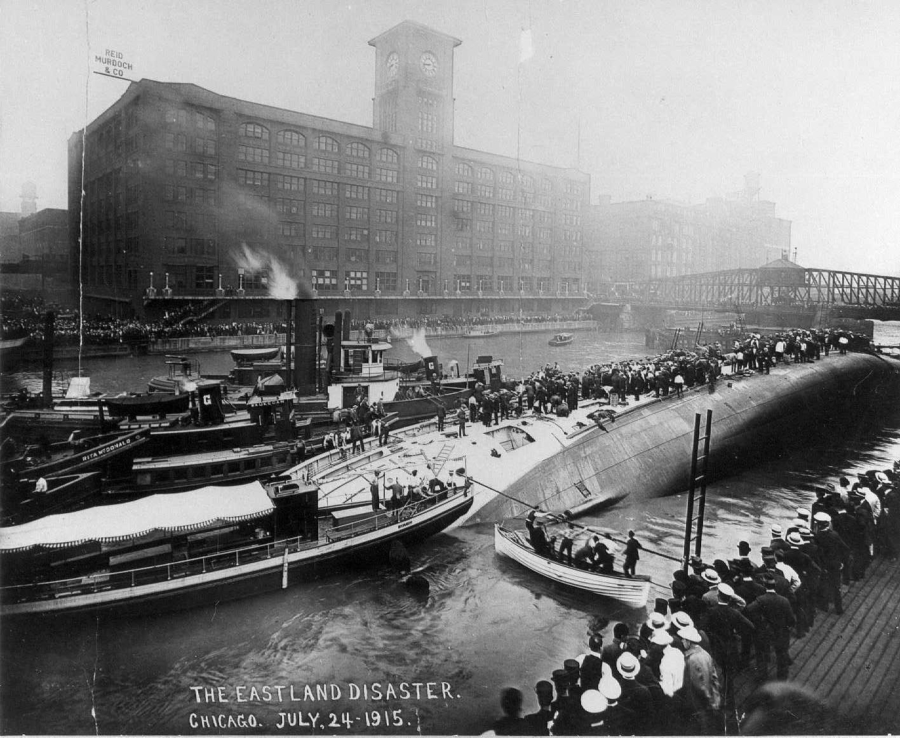
Chicago suffered one of its most devastating tragedies on July 25, 1915, when the SS Eastland steamship capsized, trapping 2,572 passengers on board. Occurring shortly after the Titanic sinking, when the lack of life boats on passenger ships came under scrutiny, a new regulation was passed to ensure enough safety vessels on ships like the SS Eastland.
Unfortunately, the addition of these life boats in the Eastland’s case caused the already top-heavy ship to rollover in the waters of the Chicago River between Clark and LaSalle Streets. Many of the passengers and crew were crushed by heavy furniture and otherwise trapped. In total, 844 passengers and crew members died that day.
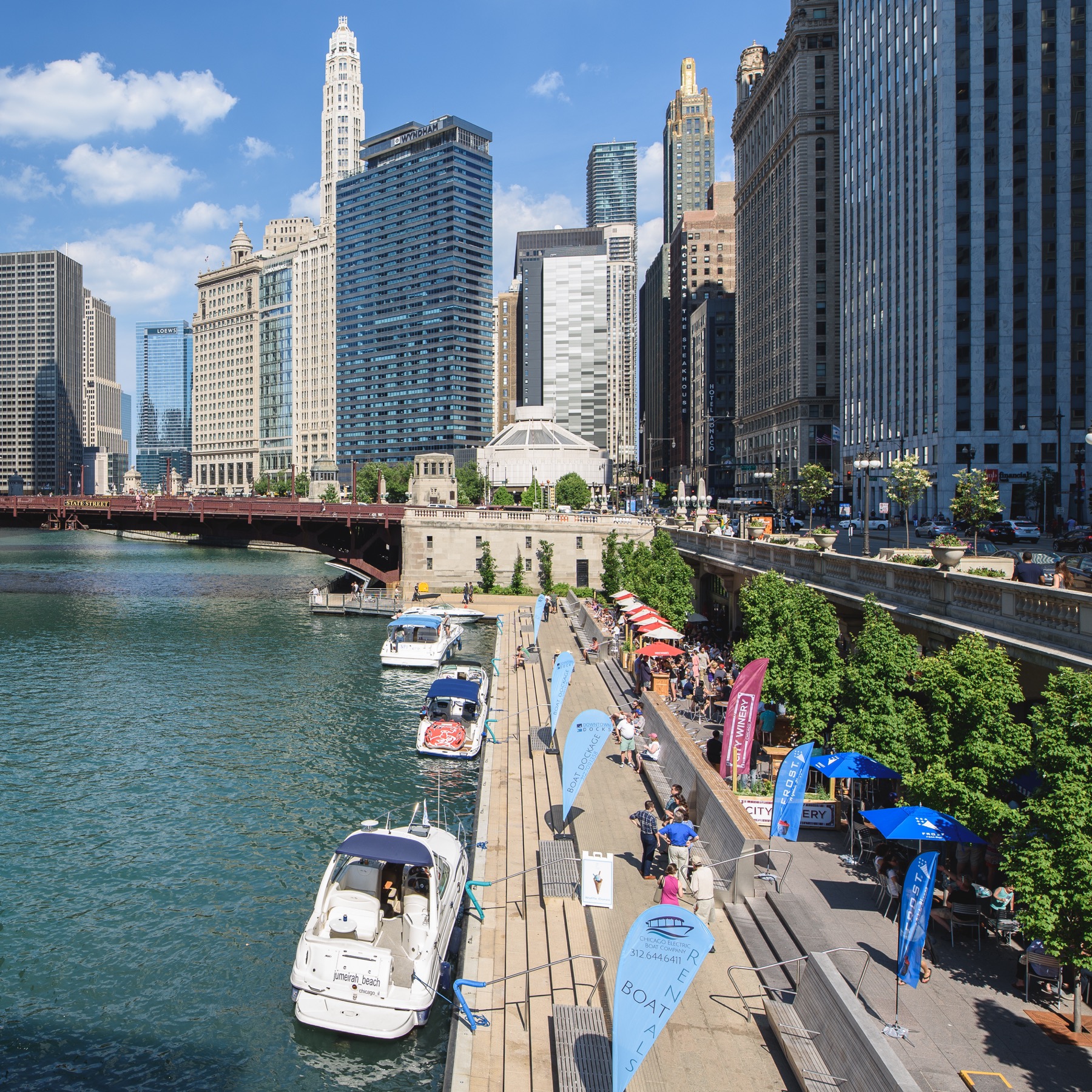
Various Chicago establishments were used as makeshift morgues to store the recovered bodies. Many of these spots have experienced ghostly sightings, and are said to elicit feelings of general unease among visitors.
Reports of apparitions and unusual wave patterns also extend to the stretch of river where the Eastland disaster occurred. Today, the area is home to the award-winning Chicago Riverwalk, one of the city’s most visited sights.
The Drake Hotel
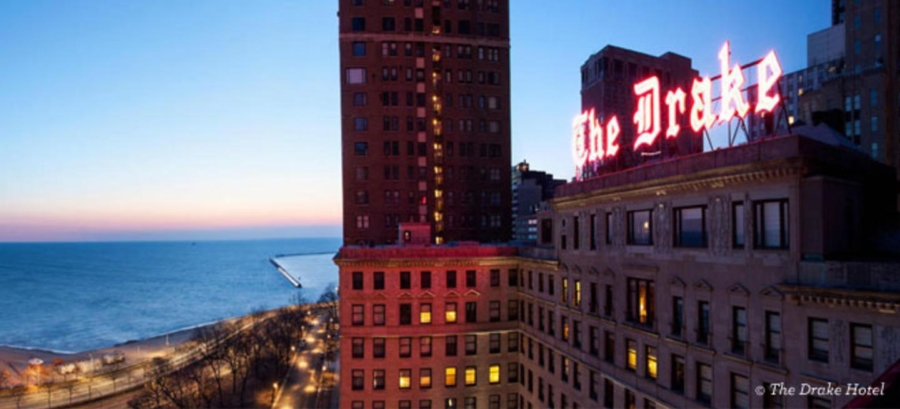
The Congress Plaza isn’t the only hotel with a ghostly history. Built in 1920, The Drake has long epitomized elegance and opulence, with illustrious visitors such as Bing Crosby, Frank Sinatra, Dean Martin, Marilyn Monroe, Queen Elizabeth II, Winston Churchill, Princess Diana — and, well, a few forlorn ghosts.
There are stories of the mourning parents of Bobby Franks (the 15-year old who was kidnapped and killed by the murderous duo Leopold and Loeb in 1924), who moved to the hotel after the infamous murder trial — and never left.
There are also two famous women who haunt the hotel. The mysterious Woman in Black shot and killed a Chicago socialite inside her eight-floor suite in 1944, but was never identified or apprehended. And the Woman in Red, who might be the oldest and most famous specter of all.
At the hotel’s New Year’s Eve gala in 1920, one of the party goers, a woman dressed in red, discovers her philandering husband (or fiancé, depending on who’s telling the story). In a frenzy of jealousy and rage, she takes an elevator to the 10th floor, and swiftly jumps to her death. Her ghostly apparition can be seen haunting the Gold Coast Room, the Palm Court, and the 10th floor.
See if you’re attune with the spirits and book a high tea at the Palm Court. Or better still, book a stay at this historic, luxurious hotel.
Graceland Cemetery
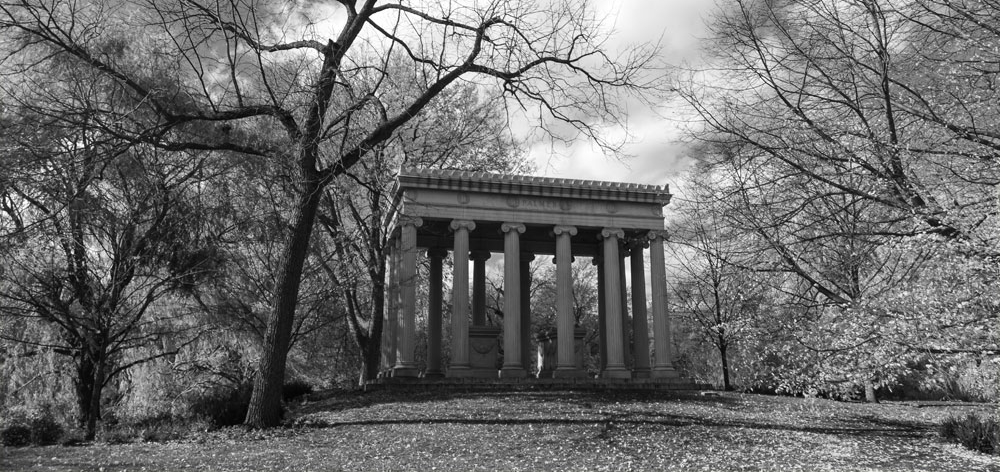
Built in 1860, Graceland Cemetery is the final resting place of some of Chicago’s most notable individuals, not least David Adler, John Kinzie, Potter Palmer, George Pullman, and Marshall Field. However, it isn’t an illustrious personage that causes a stir at the cemetery. Rather, it’s a 6-year-old girl by the name of Inez Clarke.
Inez was struck by lightning in 1880 while playing in the rain, her grave memorialized with a stone likeness commissioned by her parents. They added a glass box to symbolically protect their daughter from the elements that had so tragically taken her.
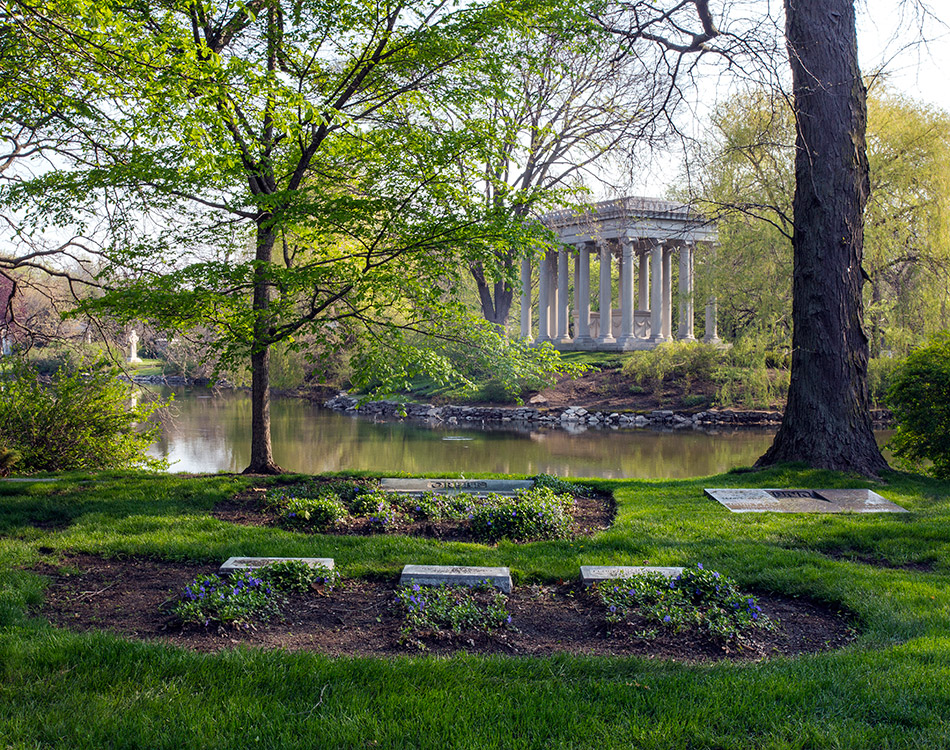
On stormy days, cemetery workers and visitors have reported the statue entirely missing. As soon as the storm subsides, however, the statue of Inez Clarke returns to its glass box. Many surmise that she leaves to once again play in the showering rain.
Site of the St. Valentine’s Day Massacre
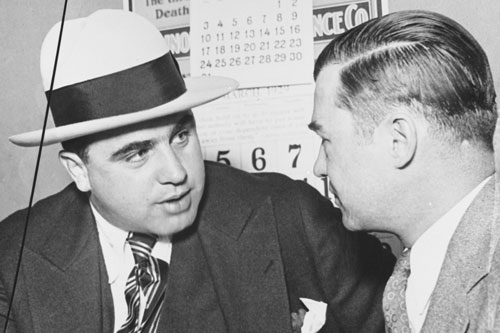
Although Valentine’s Day is typically reserved for lovers, it was bullets rather than love that showered Chicago that day in 1929. That morning, four unknown assailants opened fire on a Lincoln Park garage where members of a North Side gang had gathered. Seven people were killed and the nation was shocked at the brutal crime.
While the killings technically remain unsolved, there’s little doubt as to who was actually behind them — Al Capone. The famous gangster was in a brutal gang war with the North Side gang leader Bugs Moran, who managed to escape the hit. But for the rest of his days, Capone would claim that he was haunted by Jimmy Clark, one of the men killed in the Valentine’s Day Massacre.
Today, the garage has been demolished and nothing physical remains on the site of the massacre — though many claim that something supernatural remains. And you can still visit Chicago Pizza and Oven Grinder, situated directly across the street from the murder site. The brownstone that houses the restaurant is said to be the lookout spot used by Capone’s assassins.
Jane Addams Hull House
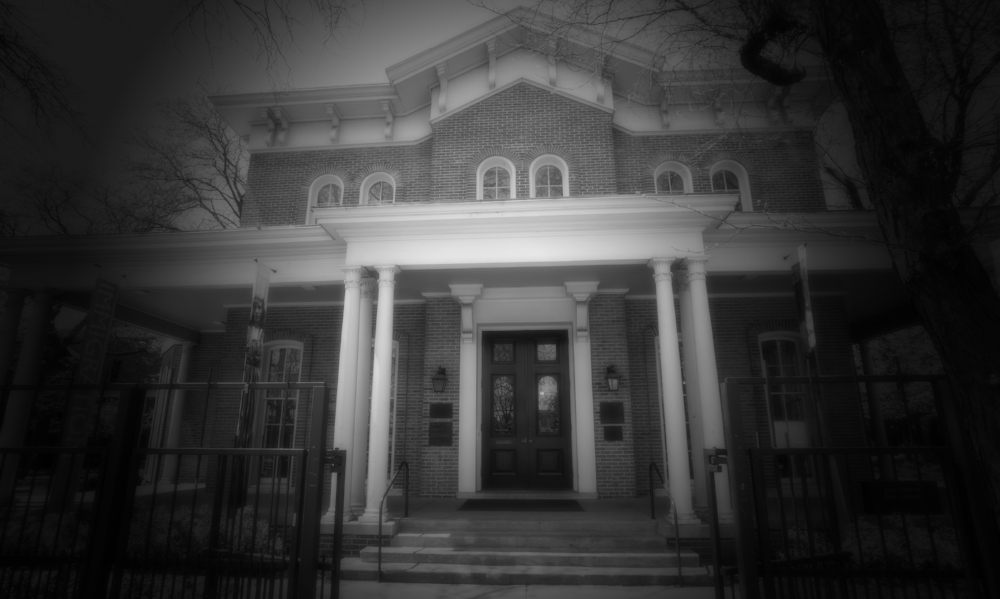
The famed Hull House was a communal residence on Chicago’s west side, run by Jane Addams, aka “the mother of social work,” to assist recently arrived immigrants. It was Addams, in fact, who first spoke of the property’s paranormal nature when she claimed footsteps could be heard in the room where she slept. She surmised this to be the wife of Charles Hull, the original owner of the building, who had passed away in that room.
The most famous urban legend of Hull House, however, is the tale of the “Devil Baby.” The story goes that a mother-to-be and devout Catholic hung a picture of the Virgin Mary in her home in order to bless her impending motherhood. Her husband, however, was just as devout an atheist, and angrily ripped the picture from the wall declaring, “I’d rather have the Devil in the house!”
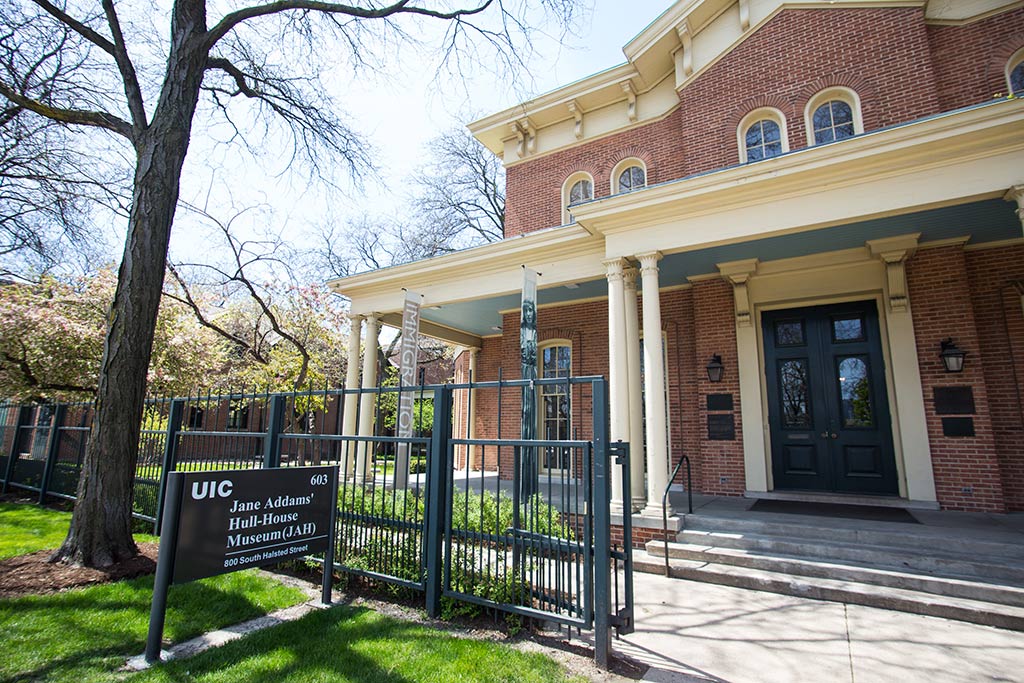
The child was reportedly born with scaly skin, hooves, and horns, and summarily abandoned at Hull House. Accounts claim that Addams tried to baptize the baby, but could not, eventually locking him in the attic until his death.
Although this story is a folk tale and has no basis in fact, it still captivates all those who visit Hull House. And honestly, devil babies aside, there are so many reasons to visit this lovely, free museum. Check out current special and permanent exhibits on historic and present-day social justice issues.
Site of Fort Dearborn
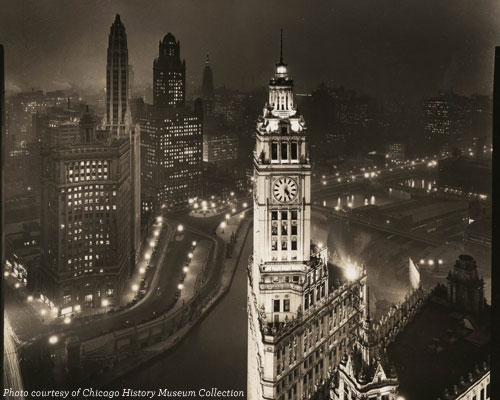
The oldest reported Chicago haunting begins before the city was even officially founded. During the War of 1812, Fort Dearborn stood near the present-day intersection of Wacker Drive and Michigan Avenue in the Loop. Its American inhabitants were in the process of evacuating the fort when the Potawotamie descended. 148 of the fort inhabitants died.
Ghostly images are repeatedly reported in snapshots taken around the former site – the souls of the slain, perhaps? Look out for the numerous plaques that mark where the fort once stood. And be sure to take an extra close look at those selfies, because you may just have captured a ghost!

